🗺✨🌐 Paper Globe
What is the Paper Globe?
print it, cut it, fold it…
Paper Globe is a tool that will generate the template of a do-it-yourself globe that you can print, cut and fold. Not only will it look neat in your living room, it is also a very good learning tool for geography, geometry, space…
This project has been directly inspired by the Sectional Globe — earth’s axis, 23.4 degrees, created by geografia, a Japan-based design studio. Buy their products, it’s really well made!
The tool is free to use, and the templates that are generated cannot be used for profit.
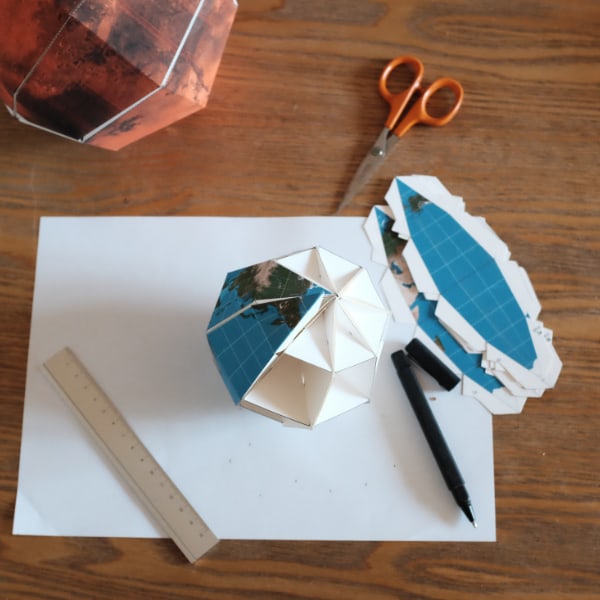
Generate your Paper Globe template
More info
The roots of the project

My name is Joachim. The Paper Globe project has started in 2012, with the publication of Le Paper Globe, a template for a DIY globe inspired by the Sectional Globe — earth’s axis, 23.4 degrees, created by geografia, a Japan-based design studio.
Le Paper Globe used a simple political map, with only borders and country names, so anyone could customize their globe after printing and assembling it.
In the spirit of the free movement of ideas and education, I released the files under a Creative Commons license which allowed people to share the templates as they see fit, as long as there’s not direct profit from that use. The hashtag #lePaperGlobe shows many of the uses around the world.
How was it built?
Ten years later in 2022, I’ve been contacted by a teacher who wants to study Mars with his pupils. How could he make a Paper Globe with Mars instead of the Earth? During these 10 years I’ve been fortunate to improve my coding skills, so I got to work.
It took me a couple of days to create the PaperGlobe utility, a Python module that can convert an image to a template file. Then I made this service, so that non-technical people can convert their maps to paper globe templates.
The code for both projects is available:
As with the templates, the code is open source and free to use and modify under a non-commercial license.
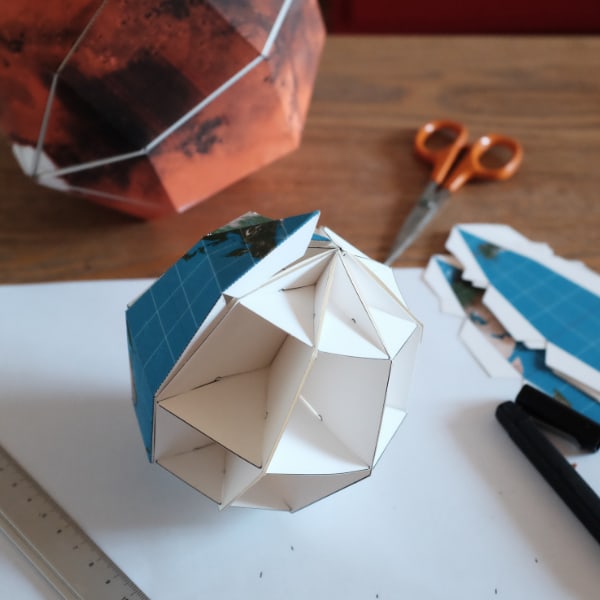
Sources for the preset images
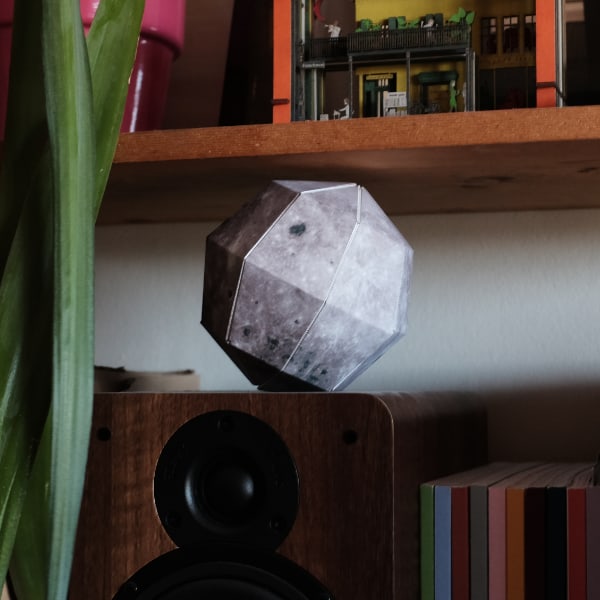
The images used as presets come from various open source and public domain sources:
- The image of the Earth is in the public domain in the United States because it was solely created by NASA. Source on Wikipedia.
- The vector image of the Political Earth is derived from an image that is in the public domain in the United States because it was created by the CIA. Source on Wikipedia.
- The image of Mars is shared under a Creative Commons Attribution 4.0 International by Solar System Scope based on NASA data. Source on Solar System Scope.
- The image of the Moon is in the public domain in the United States because it was created by NASA’s Scientific Visualization Studio . Source on NASA’s Scientific Visualisation Studio’s website.
Help!
Help
How do I generate a paper globe template?
It should be straightforward. If not, it’s a failure on my part, and I hope you’ll contact me to tell me where it failed.
The tool needs an image as a source, as well as some information about that image.
You have three different ways of specifying your image. You have to chose one:
- From a preset. The simplest. Choose the preset you wish to generate, and voilà.
- From an image file upload, if your image is on your computer. Click the “upload image” option, then click the “Browse…” button to select your image on your computer.
- From an image web address (URL) if your image is on the web. Click the “paste url” option, then fill in the input with the image URL.
Once your image is duly input, you can press the “Generate” button. The generation starts shortly after. After the generation is completed, the status should be “Success”, and a download button appears. Once you click it, your template is sent to your computer and you’re asked where to save it.
Then, check out the instructions
What’s the deal with the projection types anyway?
One of the spiciest problems in map making is that we live on a globe. How to convert a sphere to a flat image? One of the simple ways to do it is to use a cylinder and to project the map of the sphere onto the shape of the cylinder. The problem is that the poles are not well rendered and some territories are completely misshapen. Over the centuries, various map makers and mathematicians have pored over the problem. Marinus of Tyre (100 BCE), Mercator (1569) or Gall (1855) each proposed ways to use a cylindrical projection with different takes on how to present the poles. The most “logical” is the Equirectangular projection (or projection plate carrée) where latitudes are evenly separated. Mercator extends the extreme latitudes to keep the shapes of the geographical features, but it makes Greenland bigger than Africa (which it definitely isn’t), and the Gall Stereographic projection is a compromise between the two.
When you source an image for your Paper Globe, please be careful as to the projection type that’s used. The tool will only work well with these three choices.
More info about map projections on Wikipedia.
A4 vs. US Letter: what you need to know
It’s all about the standards. The A4 standard appeared in Europe and is based on the Metric system, while the US Letter format is based on the Imperial system used by the US. All of North America and some South-American countries use the US Letter format. Normally you know which format is sold in your area, and most printers are compatible with both formats.
How long do you keep the generated templates?
Due to limited hosting space, generated templates will be kept for one week. Seven days after you generate a template, all files and data will be deleted from the server. Be sure to download your template during that time!

I want to show you my beautiful globe!
Neat! You can post it on your social network of choice, and use the #paperGlobe hashtag.
For example, on the Fediverse: #paperGlobe
Is the service free?
Yes! Generating a template with this tool will never cost you money.
The templates that are generated on this website are not to be sold, it would go against the license under which I published them.
Do you sell anything?
No! I have nothing to sell, this project is meant to be used by anyone for any reason, except for commercial purposes.
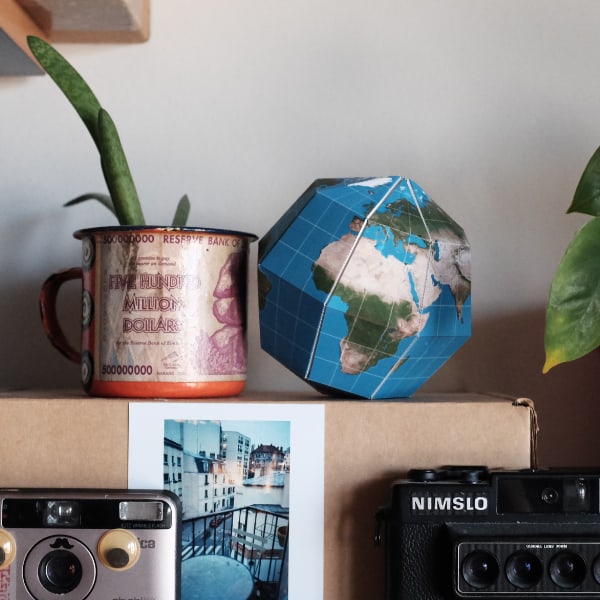
Do you accept donations though?
If this tool has helped you in such a way that you want to donate to support its development and hosting costs, I really appreciate it.
This project doesn’t cost me much (just the domain name and hosting fees), but I believe that paying Open Source & Free Software developers for their work is the cornerstone of FOSS. Paper Globe was built with many tools, like Python (the main programming language), Pallets (Flask or Jinja help me make the website) or Jenil Gogari’s Chota (the basic style for the website). Donating to any of these Open Source projects will help make Paper Globe better.
Moreover, as I don’t have many expenses relating to this project, I thought you might consider making a donation to a charity like GiveDirectly, which provides direct help to low income households in developing countries by giving them money, or to Evidence Action’s Dispensers for Safe Waters which provides more than 4 million people with safe drinking water. Both charities are very well rated on Givewell.org, which rates charities and NGOs for their efficiency.
I also support Water.org and Trees for the Future which are well rated on Charity Navigator.
If you insist and wish to help me with the hosting costs, here’s my personal PayPal address.
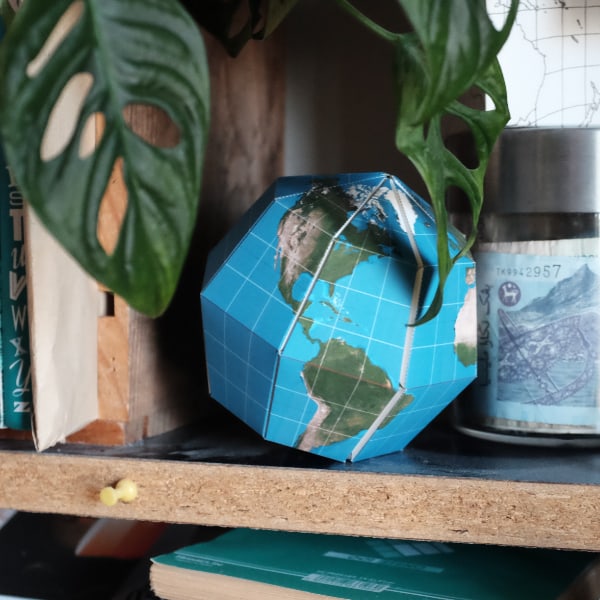
How can I contact you?
At this place around 9 most thursday mornings: 48°51'14.9"N 2°21'18.2"E, or by email: joachim.robert@gmail.com.